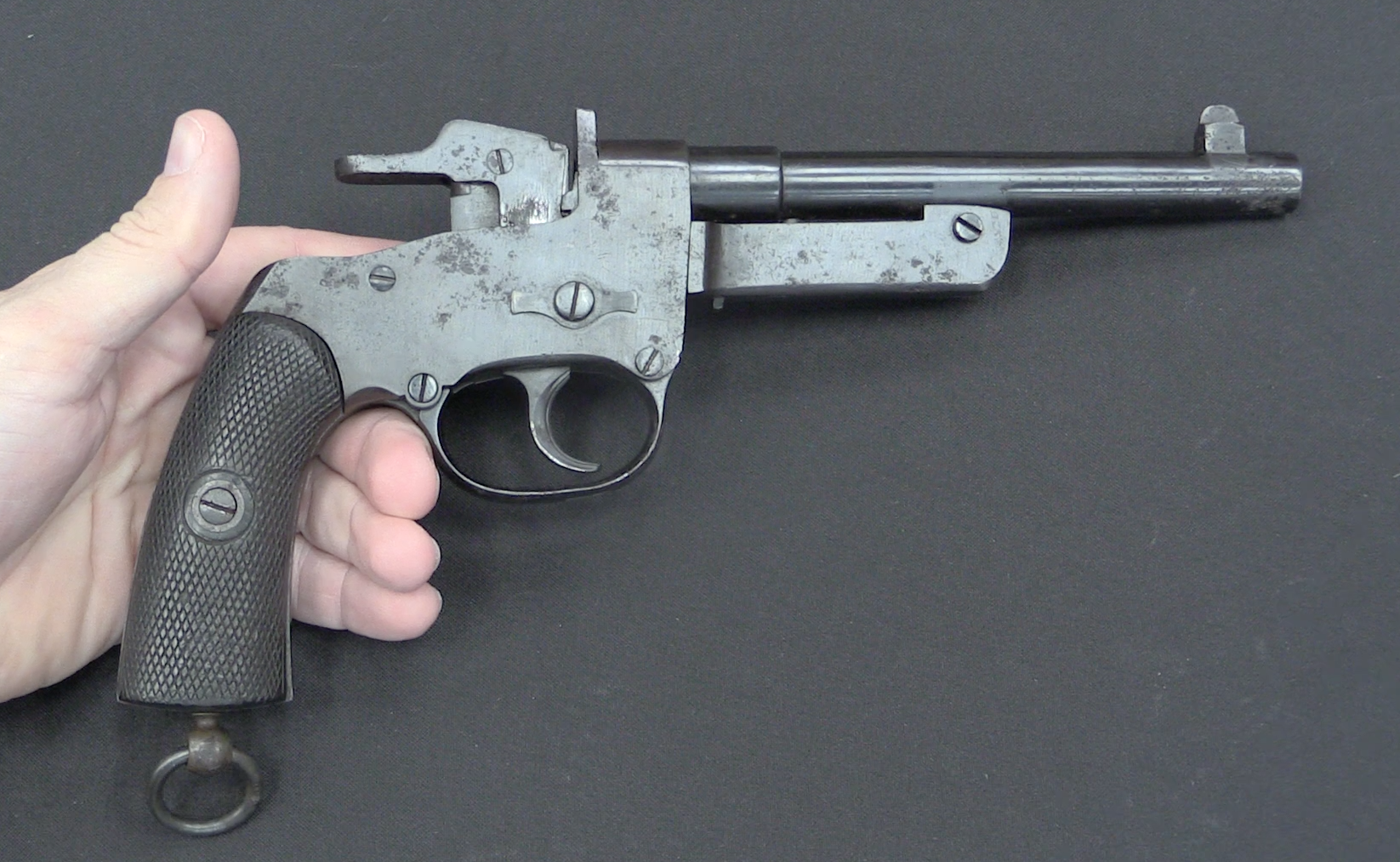The MG 08/18 was developed at the very end of World War One as a lighter alternative to the MG 08/15. It used an air-cooled barrel, and between not needing water and having lighter parts it managed to be about 6 pounds less weight than the 08/15. Only a few hundred appear to have been produced before the end of the war, and they were not used by the German military during the Weimar era (the Mg 08/15 was). The 08/18 barrel jacket served as the basis for the MG34 barrel shroud, interestingly.
Thanks to Limex for giving me access to this very rare gun to film for you!



What about Germany’s inverted-lock Vickers analogue (Parabellum IIRC) for aircraft use? With that already in production, less bulky, and seemingly lighter, I’d have appreciated some discussion on why they went this route instead.
https://guns.fandom.com/wiki/Parabellum_MG_14 claims that
Anecdotal reports claim that the MG 14 was less reliable than its contemporary, the Lewis gun.
If this actually was so and MG 08/18 keep reliability of MG 08/15 that is legendary then MG 08/18 would be better choice from reliability point-of-view.
Daweo,
Great link – thanks! It also says
Hopefully Ian gets to review one of those some day, and has some insights as to why the Germans fell short where Vickers had succeeded so brilliantly.
probably cost. Ian mentioned in that video how expensive it was to produce. even if it was cheaper or equivalent to the mg 08/15 unit to unit, the tooling was already in place to make the 08/15 in larger numvers. I would guess it was too expensive to retool everything after the war to make the parabellum even if it was lighter.
Parabellums had been manufactured since 1914, and (unlike the 08/15) they were already air cooled without retooling.
The German version of the hated M1919A6
One of the best pieces of Allied propaganda was a leaflet fired in shells towards German lines. It had a picture of a line of American troops (identifiable by their Montana Peak hats) stretching back into infinity with a hand holding a pocket watch in the foreground. The caption? “Every fifteen seconds another American soldier lands in Europe”
As for the collapse of German society, food was so scarce that the Winter of 1917-18 (and what there was of it went to the army) that it went down in German memory as the “Turnip Winter” as that was all that could be found. The Royal Navy’s economic blockade of Germany had finally worked.
By comparison, the British were living in the lap of luxury (And the USA, even with war time rationing, was a paradise https://fineartamerica.com/featured/sugar-rationing-advert-world-war-i-library-of-congress.html ) One reason Der Kaiserschlacht failed was German troops stopped and looted overflowing British supply depots which in addition to huge amounts of foo had luxuries the Germans hadn’t seen in years Chocolate! Tobacco! Rum! It also showed to the troops – who had been told the Allies were suffering as much as they – that the High Command and their officers had been lying to them.
As a reaction, the Germans prepared overly well for WWII. Among all the countries involved, only the Americans did eat better than the Germans during the war.
In Britain instead, food rationing ended only July 4 1954.
Are you sure? I was under the impression the Germans were basically starving by about 1942.
There was famine in some place under German occupation, sometimes planned starvation, but not in Germany, that “managed to maintain food consumption per capita at about 3,000 calories throughout the war” ( Cormac Ó Gráda, “the famines of WWII). The situation far worsened in the first two years AFTER the end of the war.
only by looting occupied countries could they keep Germany reasonably fed. By 1944 even that was a problem and shortages were widespread and meat rations for example were halved
not true. Germany had severe food shortages by 1943.
foo = food
I would have assumed: MG08/18 barrel shroud —> MG13 barrel shroud —> MG34 barrel shroud, in order of development.
Ian, next time you come to Warsaw, we have a nice and COMPLETE MG 08/18 here, captured in 1919 from the German forces during the Wielkopolska Uprising, fought Dec 27, 1918 to Feb 16, 1919. This is probably the nearest the 08/18 came to making it to the war 🙂
I hope Ian’s love of France does not mean he is going to go all metric on us, how much does this piece weigh in pounds?
Considering we are living in the age of computers, smart phones and pocket calculators, I am surprised how many people find themselves out of their depth when it comes to converting imperial meaurements to metric or vice versa. One basically needs only to know two figures by heart: 1 inch is 25.4 mm 1 grain is 0.0648 g.
As anyone used to imperial units knows very well, a foot is 12 inches, a yard 3 feet and a pound 7000 grains. Remembering that, it should really not be difficult to convert any common unit in the small arms field from metric to imperial or the other way, only knowing the numbers 25.4 and 0.0648.
Example: A kilogramm is 1000 g, while a pound is (0.0648 * 7000) = 453.6 g or 0.4536 kg.
“(…)age of computers, smart phones and pocket calculators(…)”
Well, maybe after invention of time machine you would be able to undone this
https://www.military.com/history/why-pirates-might-be-reason-united-states-doesnt-use-metric-system.html
“(…)1 grain is 0.0648 g. (…)”
Maybe for fire-arms enthusiast another value would be easier to remember due to existence of .454 Casull, namely that 1 pound is around 0.454 kg.
JP:
You must be a hoot at parties. But since Ian is American, I think he ought to give dimensions in feet and inches, and pounds and ounces, with metric equivalents for our cousins who can only divide by tens.
I am a hoot at parties.
Mg 08/18 #348 VHU Praha https://www.vhu.cz/exhibit/nemecky-lehky-kulomet-mg-0818/, https://www.vhu.cz/exhibit/10-nemecky-letecky-kulomet-mg-0818-raze-792%E2%80%89mm-mauser/